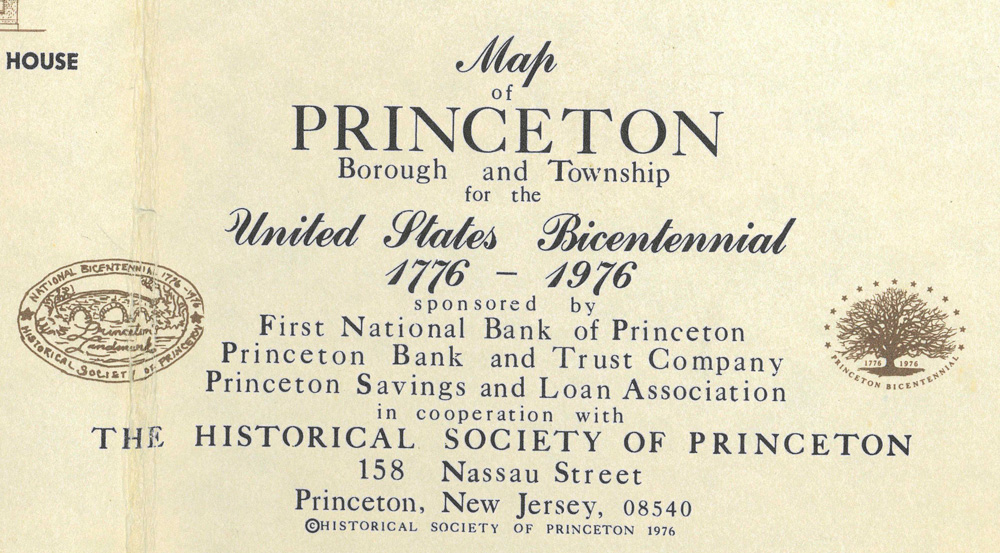
Green oval plaque, designed by local sculptor Jim Marvin

Green oval plaque, designed by local sculptor Jim Marvin
Important note: The great majority of these sites are private homes. We ask that you respect the privacy of the homeowners and view all buildings from the street. We have included contemporary images of most buildings so that you can get an up-close view in cases where the house is otherwise difficult to see.
Welcome to Princeton’s Green Oval Tour!
We invite you to step back and imagine a very early Princeton, sparsely settled and dotted with small stone farmhouses.
This is how it looked at the start of the 18th century. While largely agricultural for the next several decades, Princeton was at the same time a growing crossroads of colonial activity. Central to New York and Philadelphia, connected to Pennsylvania’s Quakers, and home to one of the only colleges in the colonies, it developed steadily with richness and complexity.
Princeton was also host to important scenes of the American Revolution. The Battle of Princeton tore through the town in January 1777, stunning and displacing many residents, Loyalist and revolutionary alike. Yet the American victory here was significant as part of the Ten Crucial Days campaign that renewed Continental spirit. Later, Princeton temporarily hosted the Continental Congress, making this town the capital of the United States in the summer of 1783.
Stories of the 18th century people who experienced this world are told at every green oval stop. This tour aims to introduce you to as many of them as possible, not just the famous names, but the women, common people, enslaved people, and others whose presence is typically buried in the historical record.
The green oval project has its origins in the 1976 Bicentennial Celebration, at which time the Historical Society of Princeton mounted plaques on forty-six buildings with origins in the 18th century. We now bring you the stories of the houses and their residents digitally as you explore the longest-standing buildings in town.
It is worth noting that this tour is not comprehensive; not every 18th century building in Princeton has a green oval plaque. Further, there are a few houses on this tour that date from the early 19th century, as more recent architectural and documentary evidence has demonstrated. Yet the portrait these sites paint together is one we find representative and compelling. We hope you do too.
Please enjoy this glimpse into early Princeton history!

Snapshot of the original map to the “green oval” buildings published in 1976.
Collection of the Historical Society of Princeton